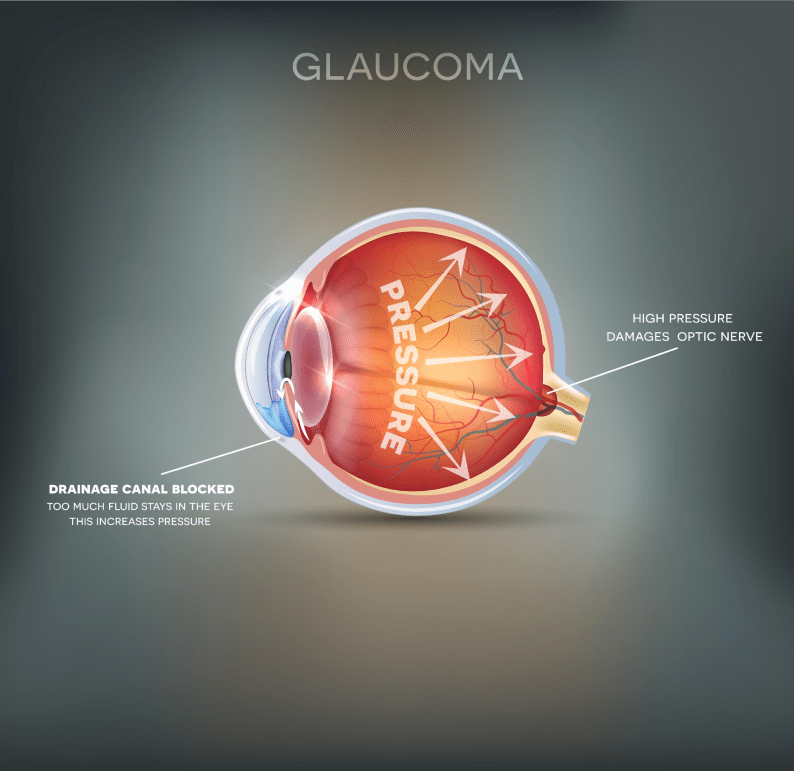
Understanding Glaucoma
In a normal, healthy eye, a clear fluid flows in and out of the eye through a chamber at the open angle, the junction where the cornea and iris meet. A tissue called the trabecular meshwork is responsible for draining fluid out of the eye.
In the first type of glaucoma, known as open-angle glaucoma, this drainage channel is open as it should be, but the fluid passes through slowly and builds up. This raises the pressure inside the eye (“intraocular pressure”), and once the pressure reaches a certain point, it damages the optic nerve. Open-angle glaucoma develops slowly and its symptoms usually go unnoticed. It accounts for at least nine out of every 10 glaucoma cases.
Open-angle glaucoma usually causes no pain or symptoms until the optic nerve has been irreversibly damaged. Glaucoma has been referred to as the “thief in the night,” and can silently reduce peripheral vision. This is why it is important to have routine eye exams that include measurement of intraocular pressure and other diagnostic tests to evaluate the optic nerve and look for early signs of glaucoma.

Glaucoma Treatments
The team at Zambelli Cataract & Laser Eye Institute offers several different glaucoma treatments aimed at lowering intraocular pressure and reducing or preventing damage to the optic nerve.
The selected treatment depends on the type and severity of the condition. Many of our glaucoma patients use medicated eye drops. Some eye drops cause the eye to produce less fluid (thereby reducing intraocular pressure); others help the fluid drain out of the eye.
SLT Laser
Another option for the treatment of glaucoma is a procedure called selective laser trabeculoplasty, or SLT. During SLT, a laser is used to create tiny passages in the drainage channel and increase the fluid filtration.
Minimally Invasive Glaucoma Surgery (MIGS)
MIGS, which stands for “minimally invasive glaucoma surgery” or “microinvasive glaucoma surgery,” was developed to improve fluid outflow while reducing the risk of standard glaucoma surgeries. MIGS procedures involve microscopic-sized equipment and tiny incisions, which are less disruptive to the eye’s tissue and less likely to cause complications than traditional surgery.
One of the MIGS procedures that we have had great success with involves the use of the iStent, a small device (similar to a shunt or stent) that is surgically inserted into the eye to bypass the trabecular meshwork. The iStent increases the flow of fluid out of the eye to reduce intraocular pressure. With the iStent, patients may be able to reduce or eliminate the need for glaucoma medication. Other MIGS devices have been widely studied and are now FDA-approved for use in the United States.
Learn More about Glaucoma
If you have questions about glaucoma and its treatment, please contact our Rochester, PA location to schedule an appointment with our ophthalmologists.
